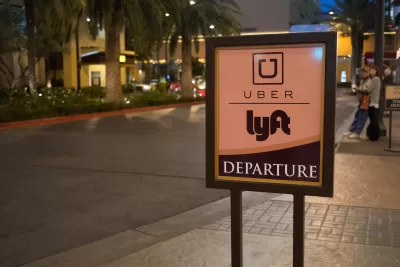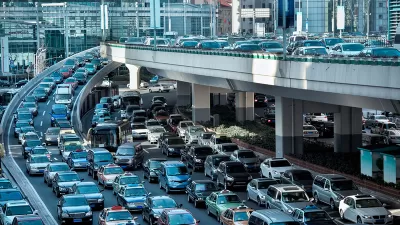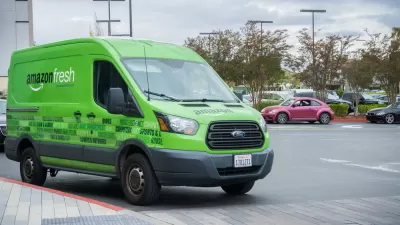More than one city has ditched parking in response to the congestion and conflicts created by ride-hailing pick-ups and drop-offs .

CNN surveys the nation for examples of cities that are rethinking curb space in the still nascent days of ride hailing. Already, for example, Washington, D.C., San Francisco, and Fort Lauderdale "have unveiled test programs that rethink this precious resource," according to Matt McFarland. More specifically, the "cities are replacing commercial parking spots with reserved pickup and dropoff areas for Uber and Lyft."
San Francisco's new pilot program, for instance, "would designate dropoff zones for ridesharing services in a popular commercial corridor."
"Meanwhile, Uber recently worked with local government in Fort Lauderdale to identify hotspots for pick-ups and dropoffs on Las Olas Boulevard, a lively area with nightlife and dining," according to McFarland.
In October, Planetizen shared news of a similar program in Washington, D.C. in the nightlife neighborhood on Connecticut Avenue, near Dupont Circle.
Kristin Musulin provides additional coverage and analysis of the trend away from parking and toward drop-off zones for transportation network companies.
FULL STORY: Cities warm up to designated Uber, Lyft pick-up spots

Manufactured Crisis: Losing the Nation’s Largest Source of Unsubsidized Affordable Housing
Manufactured housing communities have long been an affordable housing option for millions of people living in the U.S., but that affordability is disappearing rapidly. How did we get here?

Americans May Be Stuck — But Why?
Americans are moving a lot less than they once did, and that is a problem. While Yoni Applebaum, in his highly-publicized article Stuck, gets the reasons badly wrong, it's still important to ask: why are we moving so much less than before?

Using Old Oil and Gas Wells for Green Energy Storage
Penn State researchers have found that repurposing abandoned oil and gas wells for geothermal-assisted compressed-air energy storage can boost efficiency, reduce environmental risks, and support clean energy and job transitions.

Updating LA’s Tree Rules Could Bring More Shade to Underserved Neighborhoods
A new USC study finds that relaxing Los Angeles’ outdated tree planting guidelines could significantly expand urban tree canopy and reduce shade disparities in lower-income neighborhoods, though infrastructure investments are also needed.

California's Canal Solar Projects Aim to Conserve Resources and Expand Clean Energy
California’s Project Nexus has begun generating electricity from solar panels installed over irrigation canals, with researchers and state agencies exploring statewide expansion to conserve water and boost clean energy production.

HHS Staff Cuts Gut Energy Assistance Program
The full staff of a federal program that distributes heating and cooling assistance for low-income families was laid off, jeopardizing the program’s operations.
Urban Design for Planners 1: Software Tools
This six-course series explores essential urban design concepts using open source software and equips planners with the tools they need to participate fully in the urban design process.
Planning for Universal Design
Learn the tools for implementing Universal Design in planning regulations.
Heyer Gruel & Associates PA
City of Moreno Valley
Institute for Housing and Urban Development Studies (IHS)
City of Grandview
Harvard GSD Executive Education
Salt Lake City
NYU Wagner Graduate School of Public Service
City of Cambridge, Maryland





























